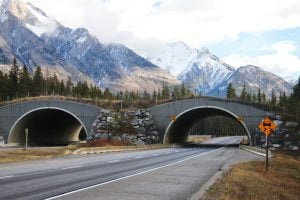Despite intense public support for pollinator conservation, politicians have been slow to respond in Canada. Where we have had policy developed, in many cases, it focuses on the honeybee industry instead of addressing threats to endangered wild native pollinators in a way backed by science. As a result, Canada lags behind other countries, which have taken a leadership role in protecting pollinators and the ecosystem services pollinators provide.
In our new paper, published in FACETS (June 2023), we surveyed 32 scientific advisors and other participants representing Canadian and U.S.-based academics, NGO scientists, civil servants and agricultural industry members with expertise in pollinators and wildlife conservation to identify the most important and easy to implement policy solutions for Canada. We also used the surveys to identify key research needs specific to the country, organized under 33 themes.
Pollinators in Canada are subject to many threats across large landscapes. The extent of these threats differs in various habitats. Even cities have been shown to provide refuge for pollinator communities. Canada needs a coordinated plan across the country, provinces, territories, cities and counties to protect these precious critters. Our surveyed experts identified 48 supported and feasible conservation solutions, organized into four main goals to develop Canada’s vision for pollinator protection..
Many specific items presented in the paper were identified as feasible and supported (i.e. by the surveyed experts) actions. Some examples of these solutions include:
- Eliminating the use of pesticides for cosmetic reasons (e.g. maintaining perfect lawns)
- Establishing bee-friendly certification for farms
- Require queen excluders (i.e. special holes in the hive boxes that allow worker bees to go in and out but keep the larger queens inside) for managed bee colonies so species don’t establish nests outside their native range in the wild.
- Eliminate invasive plants in seed mixes marketed as pollinator-friendly to land managers and the public.
- Establish a clean stock program which ensures managed bees are disease-free to reduce disease spillover from managed to wild bee populations.
What can the average person in Canada do to help the plight of the pollinators?
First, encourage your federal MP to look at our recommendations and advocate for science-based policy to conserve native pollinators. You can find the documents in the link below. In addition, you can find your MP’s contact information by visiting www.ourcommons.ca.
Second, contribute to community science projects like BumbleBeeWatch.org (a project focussing on bumblebees) or to a more general program iNaturalist to help scientists locate populations of declining species and keep track of which species remain common. Having more eyes out there collecting data about our native species helps us track populations and assess threats across this vast country.
Third, spread the word about native pollinators. A study we did a few years ago showed that more than half of Canadians thought the European honeybee was a native species and in decline. There is a lot of misinformation and ‘beewashing’ out there. Bees are among Canada’s most important pollinators, and we have 865 described species. Most are silver/greenish, nine make honey, most are solitary (not living in hives), and many can’t even sting! Learning about your local native pollinators and sharing what you learn with friends and family can help us move towards more informed policy decisions. To learn more about pollinators, try local libraries and bookstores for books on native biodiversity and attend workshops and bee walks, if available, in your local green spaces.
Lastly, help protect and create native pollinator habitats wherever you can. Whether in your garden, in planters on your balcony or by helping your local park stewardship group remove invasive species and plant native ones, habitat remains a critical support. Native pollinators have long-standing relationships with native plants that we are barely beginning to understand as scientists. By protecting good quality green spaces (i.e. free of pesticides, pathogens and full of native plant biodiversity) and creating little pockets of new habitat wherever we can, we can give native pollinators a fighting chance to exist for future generations to come.
For more information and to see the publications, please visit: https://www.savethebumblebees.ca/plan/






